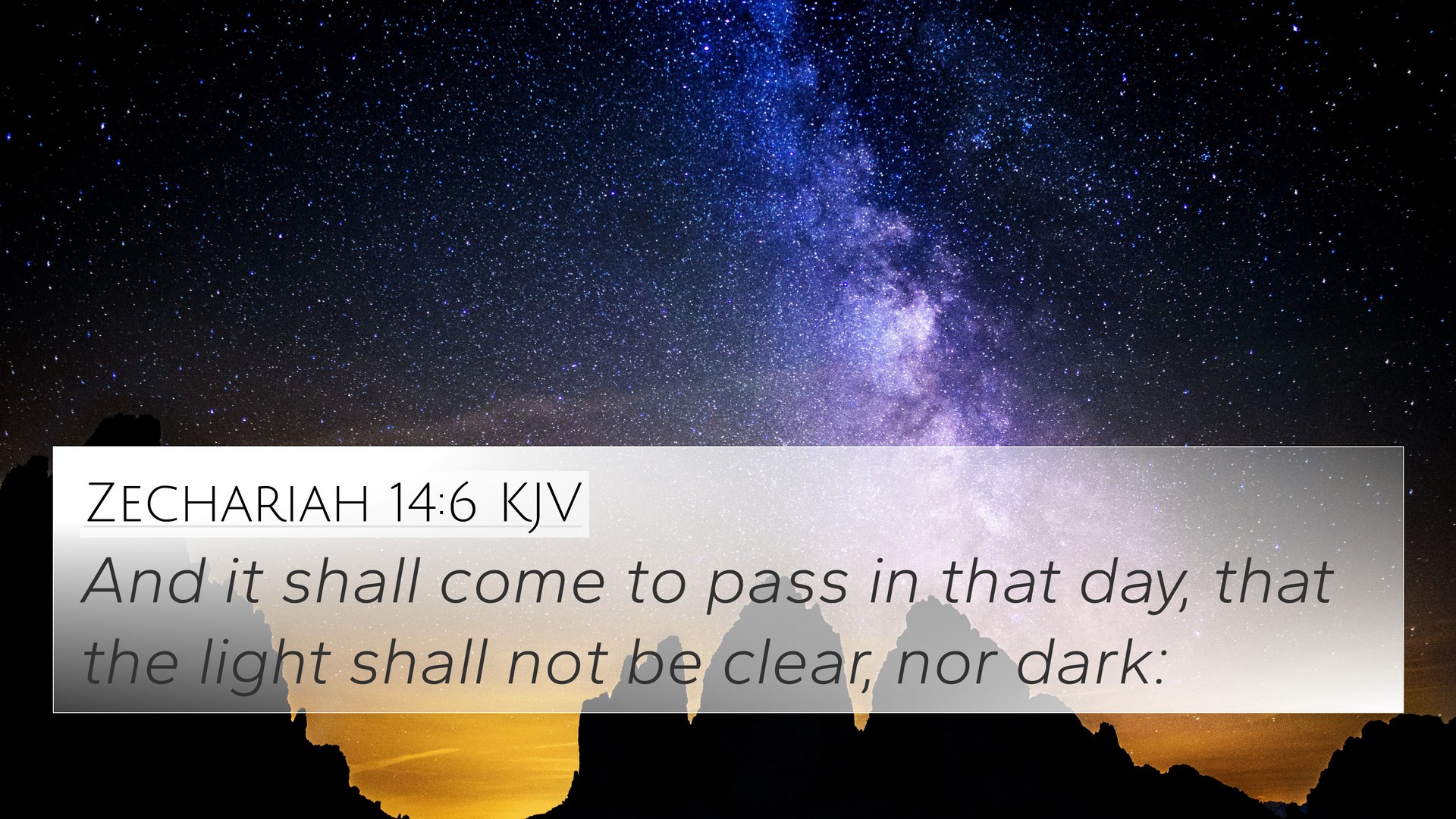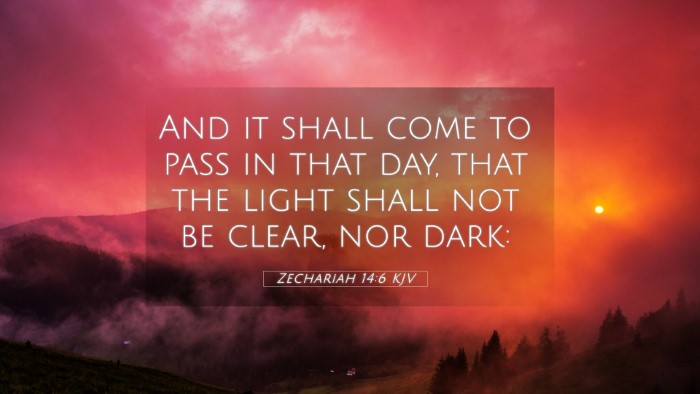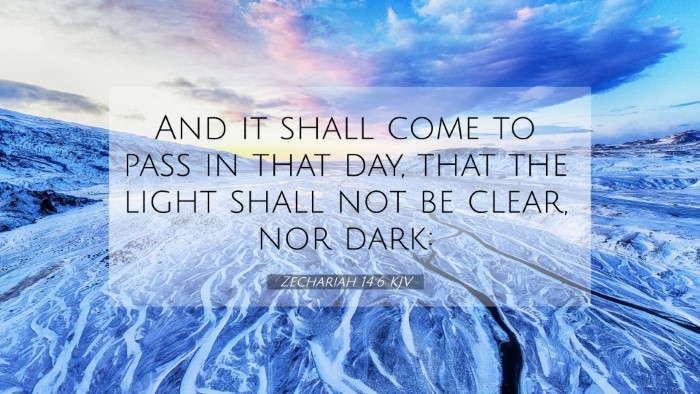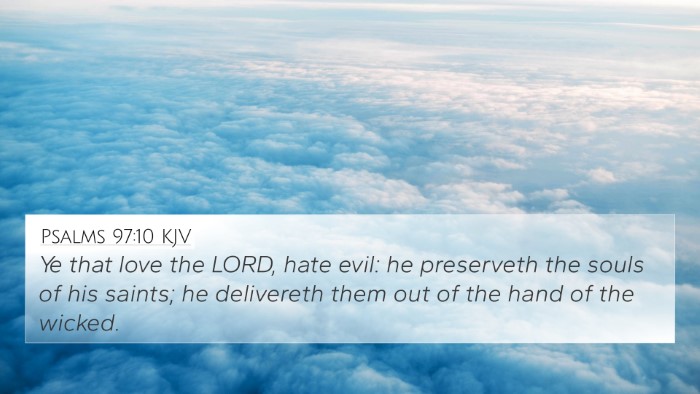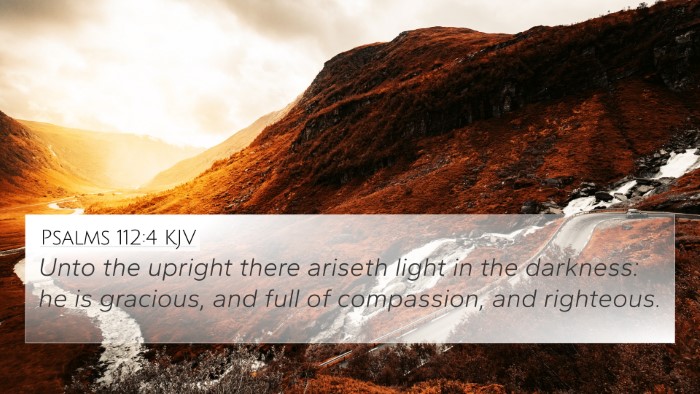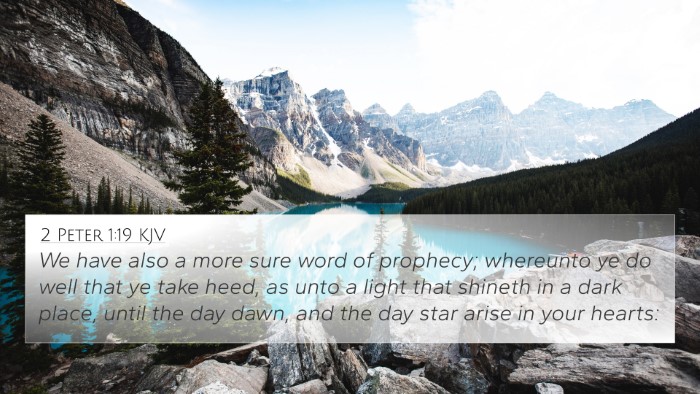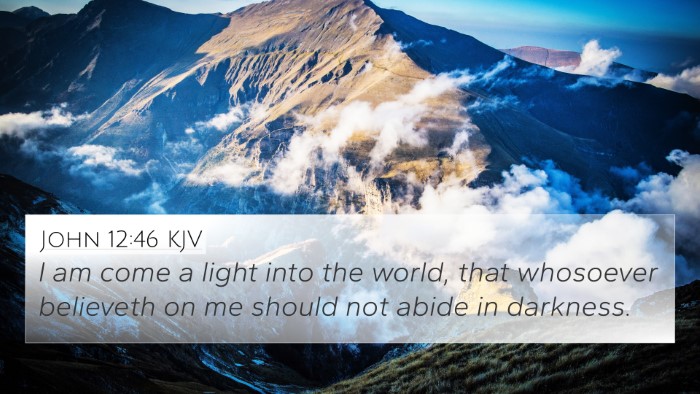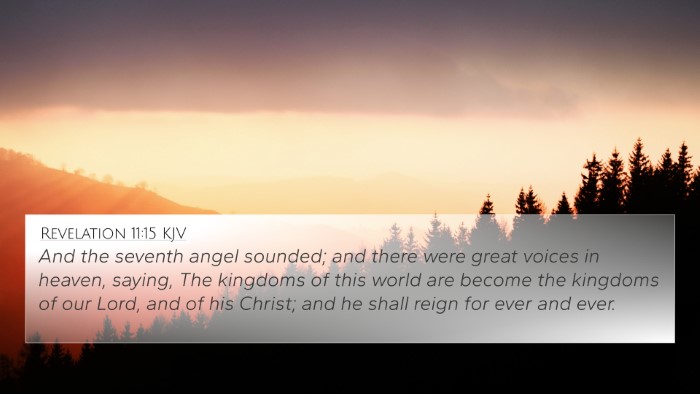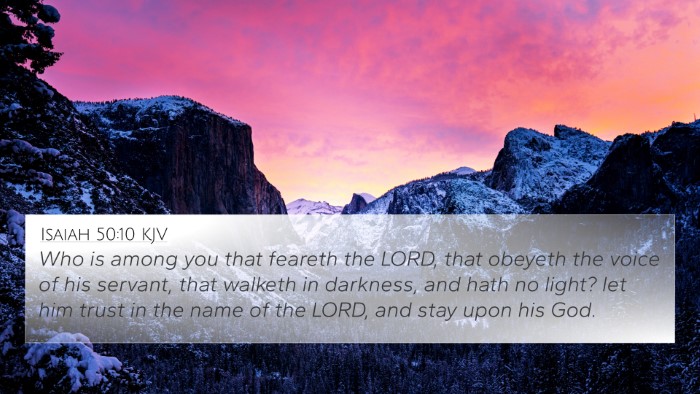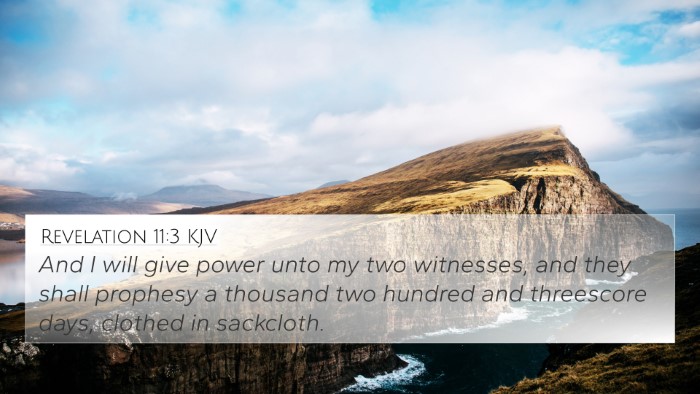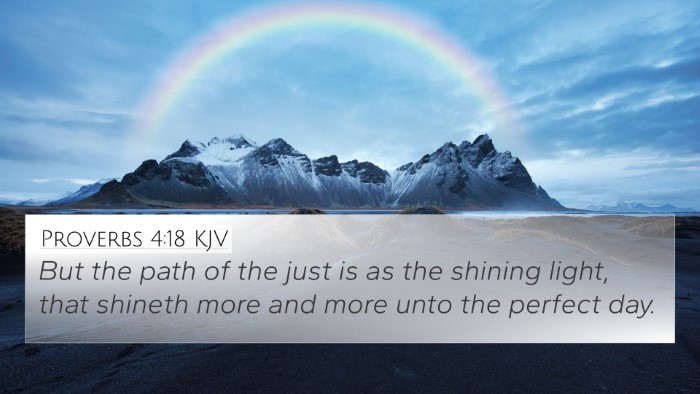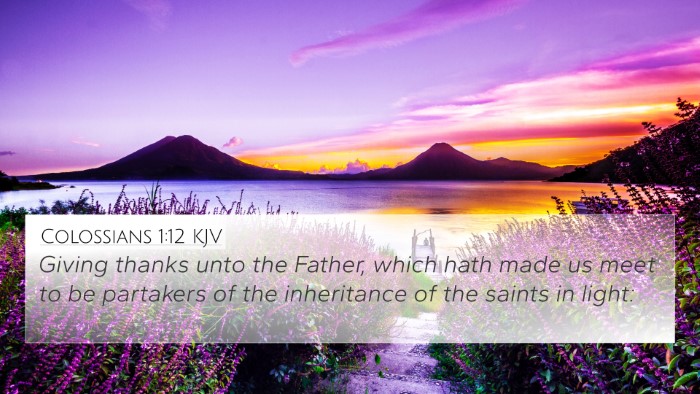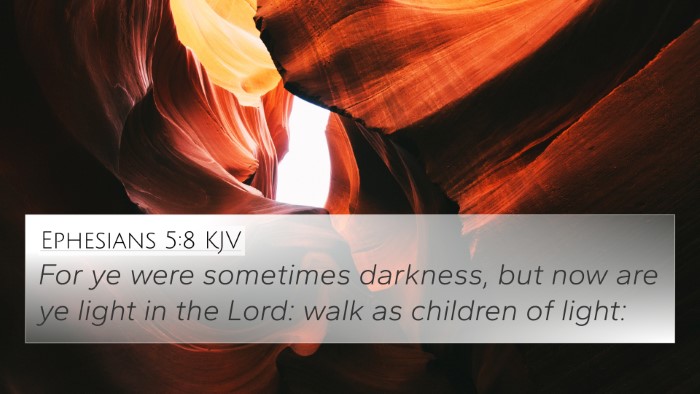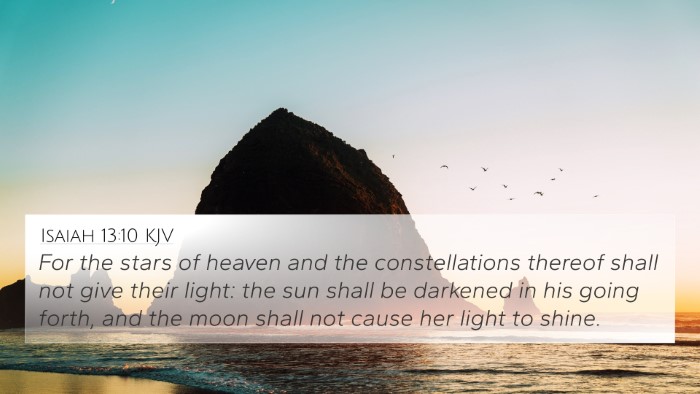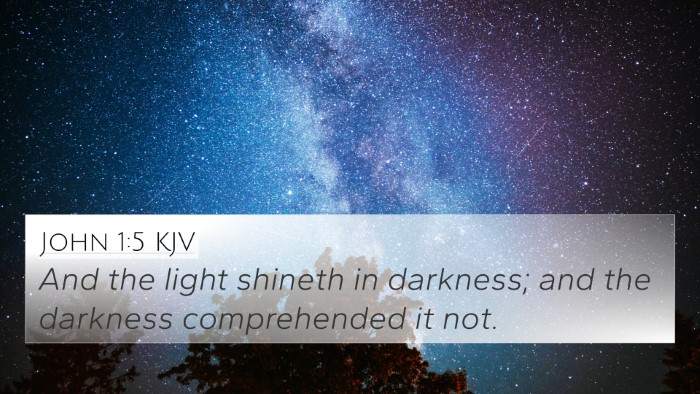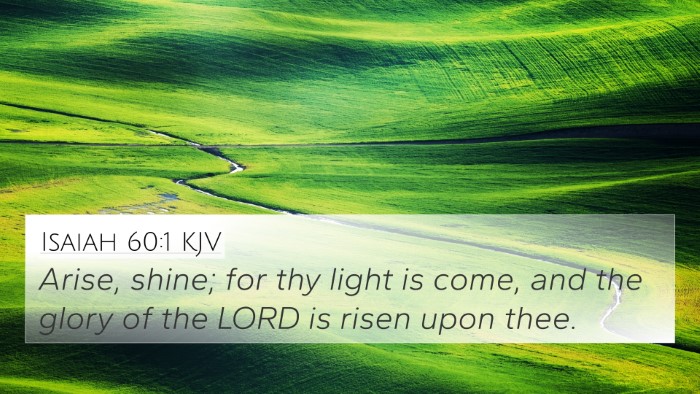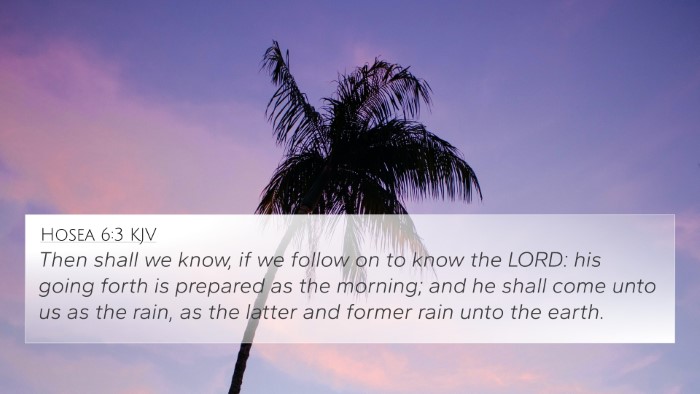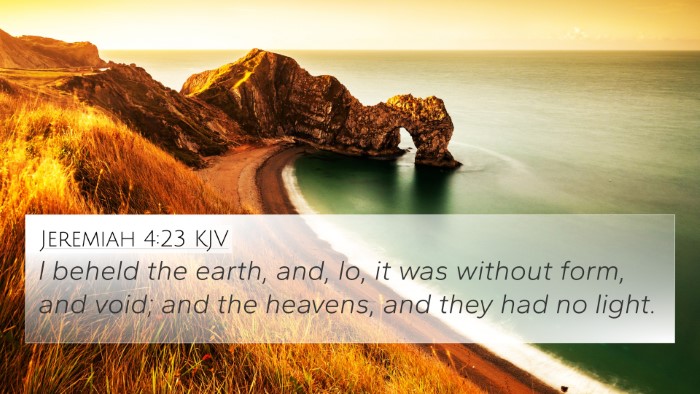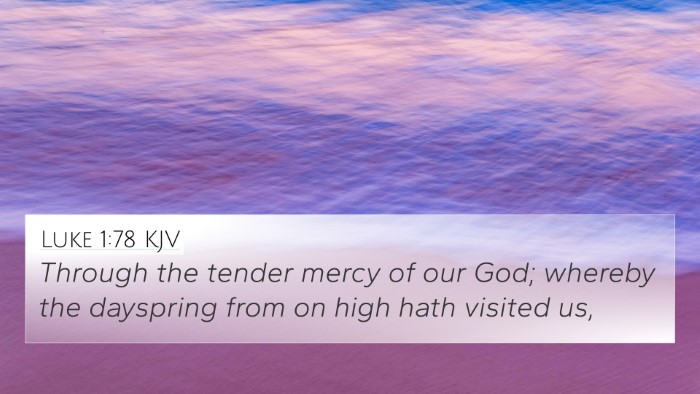Understanding Zechariah 14:6
Verse Reference: Zechariah 14:6 - "In that day it will become clear that there will be no light; the luminaries in the heavens will congeal."
Meaning and Interpretation
Zechariah 14:6 depicts a profound and mysterious day characterized by the absence of light from celestial bodies. This imagery can be understood in both a literal and metaphorical sense, reflecting the themes of divine judgment and the ultimate triumph of God's kingdom.
Commentary Insights
-
Matthew Henry:
Henry points out the significance of "that day," often referring to the day of the Lord when God will intervene in history. The darkness here symbolizes judgment and the cessation of the normal order of creation, highlighting the sovereignty of God over the cosmos.
-
Albert Barnes:
Barnes interprets the lack of light as symbolic of both literal darkness and spiritual desolation. In the context of Israel's future, he suggests this verse connects to God's promise of restoration despite the judgments faced by the nation.
-
Adam Clarke:
Clarke emphasizes the apocalyptic nature of this prophecy. The imagery of the celestial lights ceasing to shine serves to prepare believers for the significant transformations coming in the eschatological future.
Cross-References
Zechariah 14:6 connects thematically to several other scriptures that elaborate on the themes of judgment and divine intervention:
- Isaiah 13:10: "For the stars of heaven and their constellations will not give their light; the sun will be dark at its rising, and the moon will not shed its light."
- Joel 2:31: "The sun shall be turned to darkness, and the moon to blood, before the great and terrible day of the Lord comes."
- Matthew 24:29: "Immediately after the tribulation of those days the sun will be darkened, and the moon will not give its light, and the stars will fall from heaven."
- Revelation 6:12: "When he opened the sixth seal, I looked, and behold, there was a great earthquake, and the sun became black as sackcloth, the full moon became like blood."
- Amos 8:9: "And on that day, declares the Lord God, I will make the sun go down at noon and darken the earth in broad daylight."
- Luke 21:25: "And there will be signs in sun and moon and stars, and on the earth distress of nations in perplexity because of the roaring of the sea and the waves."
- Romans 1:18: "For the wrath of God is revealed from heaven against all ungodliness and unrighteousness of men, who by their unrighteousness suppress the truth."
Thematic Connections
This verse can be linked thematically with the following ideas:
- Judgment: The prophecy reflects a common biblical theme where judgment is heralded by cosmic disruptions.
- Light vs. Darkness: A recurring motif in scripture where darkness symbolizes evil and judgment, contrasting with light representing God’s presence and righteousness.
- Hope and Restoration: Despite the judgment, as seen in the surrounding verses of Zechariah, God ultimately offers hope of redemption and restoration for His people.
Practical Applications
This verse invites believers to reflect on the sovereignty of God over history and the importance of being spiritually vigilant. Here are some practical applications:
- Understanding the prophetic nature of scripture can deepen one's faith and awareness of God’s plans.
- Reflecting on the consequences of sin and the importance of repentance in the light of God's impending judgment.
- Encouraging hope and faith in God's ultimate restoration and renewal of creation.
Final Thoughts
Zechariah 14:6 serves as a reminder of the power of God over the natural order, as well as a beacon of hope in the promise of restoration. Through the lens of cross-referencing biblical texts, believers can find deeper understanding and connections within scripture that illuminate God’s ongoing narrative of redemption.
